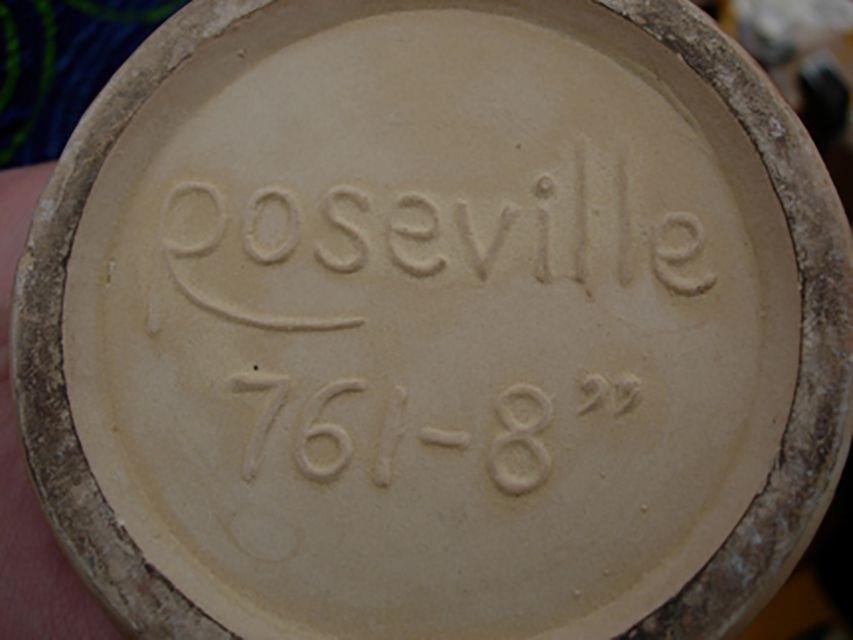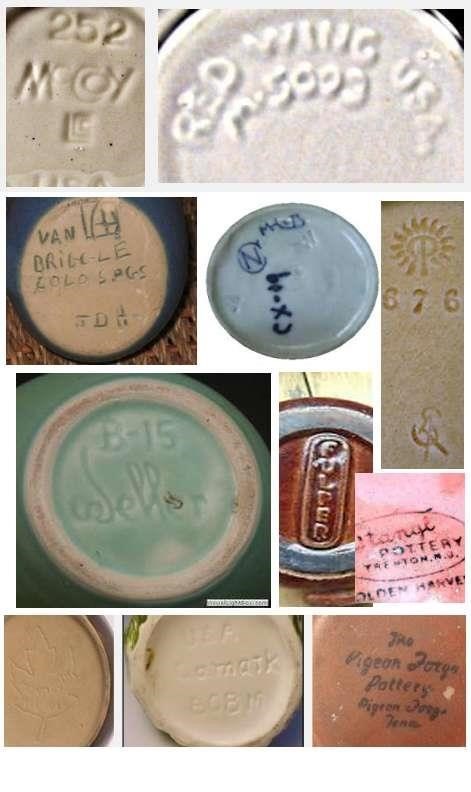USA Pottery Marks Identification Guide⁚ An Overview
This guide helps identify American pottery marks‚ crucial for determining age‚ maker‚ and value. Learn to decipher trademarks‚ signatures‚ and initials‚ understanding their significance in assessing rarity and worth. Explore resources for effective identification.
Understanding Pottery Marks
Pottery marks‚ usually found on the base‚ are vital clues to a piece’s history. They act as fingerprints‚ identifying the maker‚ the period of manufacture‚ and sometimes even the production line. These marks range from simple initials or numbers to elaborate trademarks and artist signatures. Understanding these markings is key to unlocking a piece’s story‚ whether it’s a mass-produced item or a unique handcrafted creation. The style‚ placement‚ and details of the mark itself often provide crucial information for dating and identification. Even seemingly insignificant marks can significantly impact a piece’s value and collectability in the antique market.
Types of Pottery Marks⁚ Trademarks‚ Signatures‚ and Initials
American pottery marks fall into several key categories. Trademarks are often the most common‚ representing a company’s registered logo or brand. These can include company names‚ stylized lettering‚ or unique symbols. They are often used for mass-produced pieces and can help pinpoint the manufacturer. Artist signatures provide a direct link to the creator of a piece‚ particularly valuable in the case of studio pottery. These signatures can vary wildly in style‚ ranging from formal script to informal markings. Finally‚ initials may be used as a shortened version of a company name or an artist’s signature‚ sometimes offering a less obvious but still useful clue in identification efforts. Understanding these distinctions is crucial for accurate identification;
The Significance of Pottery Marks⁚ Value and Rarity
Identifying pottery marks is paramount in determining a piece’s value and rarity. Certain manufacturers and artists are highly sought after by collectors‚ significantly increasing the value of their work. Rare marks‚ those associated with limited production runs or unique designs‚ command higher prices. The age of a piece‚ often indicated by mark evolution over time‚ plays a crucial role. Even seemingly insignificant marks can enhance value. A unique artist’s signature or an unusual variation of a standard company mark can distinguish a piece from mass-produced items. Understanding the historical context of the mark‚ the maker’s reputation‚ and production techniques all contribute to assessing the overall value and rarity of a piece of American pottery.
Identifying American Pottery Marks
This section delves into the specifics of identifying American pottery marks‚ covering various types and their associated meanings. We will explore manufacturer marks‚ studio pottery marks‚ and the significance of “USA” markings.
Marks indicating “USA”⁚ Deciphering their meaning
The simple “USA” mark on pottery often presents a challenge. Unlike a specific company trademark‚ it only confirms the piece’s origin within the United States. This broad designation doesn’t reveal the manufacturer‚ artist‚ or even the precise timeframe of production. Many pieces‚ especially from the mid-20th century‚ bear this generic mark‚ making further identification more complex. To pinpoint the maker‚ additional clues are needed – perhaps a hidden mark‚ style of glaze or shape‚ or even the type of clay used. Consider consulting online databases or books specializing in American pottery for more specific details. Don’t rely solely on the “USA” mark for comprehensive identification; it’s merely a starting point in your research journey. The absence of a more detailed mark may indicate a smaller studio or workshop. Remember to examine the entire piece carefully for any other markings.
Identifying Studio Pottery Marks
Studio pottery marks are often unique‚ reflecting the artist’s individual style and preferences. Unlike mass-produced pieces‚ these marks may be hand-painted‚ stamped‚ or incised‚ resulting in variations even within the work of a single artist. They can range from simple initials or a stylized signature to more elaborate designs or symbols. Identifying these marks often requires researching the work of known American studio potters‚ using online databases and resources such as The Marks Project. Pay close attention to the mark’s style – is it bold and graphic‚ delicate and flowing‚ or something else entirely? The type of mark (painted‚ stamped‚ etc.) and its location on the piece also offer valuable clues. Consider the pottery’s overall style and aesthetic; this can help narrow down possible artists. Remember‚ studio pottery marks are often less standardized than manufacturer’s marks‚ demanding more detailed examination and research for successful identification.
Recognizing Manufacturer Marks⁚ A Comprehensive Guide
Identifying manufacturer marks on American pottery often involves recognizing specific logos‚ company names‚ or numbers. Many companies used consistent markings throughout their production‚ providing a reliable way to trace the origin of a piece. These marks can be printed‚ impressed‚ or applied in other ways‚ and their style can evolve over time. A comprehensive guide should include a visual catalog of common marks from prominent American pottery manufacturers‚ such as Roseville‚ Hull‚ and Frankoma. Look for variations in font‚ design‚ and the placement of the mark on the piece itself. Sometimes‚ additional information like a number or letter code alongside the main mark can aid identification. Understanding the history of American pottery production and the lifespan of different companies is beneficial. Reference books‚ online databases‚ and specialized websites can provide invaluable resources for comparing your pottery’s mark against known examples from different manufacturers. Careful observation and diligent research are essential for accurate identification.

Resources for Identification
Unlock the secrets of American pottery marks through online databases‚ specialized books‚ and dedicated websites. These invaluable resources offer comprehensive catalogs and detailed information for accurate identification.
Online Databases and Resources
The internet offers a wealth of resources for identifying USA pottery marks. Many dedicated websites‚ such as online forums and specialized collector communities‚ provide extensive image databases of known marks. These platforms often feature user-submitted images and descriptions‚ fostering collaborative identification efforts. Several museum websites also host searchable databases of pottery collections‚ including detailed information on markings and manufacturers. Remember to critically evaluate online information‚ cross-referencing findings across multiple sources for accuracy. Utilize search engines effectively‚ employing specific keywords like “pottery mark identification‚” along with any known details of your piece‚ to refine your search results. Always prioritize reputable sources and established institutions for the most reliable information. Don’t forget to explore social media groups dedicated to antique and collectible pottery for expert assistance and community input.
Books and Publications on Pottery Marks
Numerous books and publications dedicated to pottery marks offer invaluable resources for identification. Specialized encyclopedias and identification guides provide comprehensive listings of American pottery marks‚ often including detailed images and historical context. These resources frequently categorize marks by manufacturer‚ region‚ or era‚ simplifying the search process. Many books focus on specific types of pottery‚ such as studio pottery or specific manufacturers‚ offering in-depth information on their unique markings. Look for books with high-quality images and detailed descriptions‚ ensuring accurate visual comparisons. Consider seeking out publications from reputable publishers and authors with established expertise in the field of ceramics. Check library catalogs and online bookstores for available titles‚ using keywords like “American pottery marks‚” “pottery identification guide‚” or the name of a suspected manufacturer to refine your search. These books provide a deeper understanding of pottery history and manufacturing techniques‚ enhancing your identification skills beyond simple mark recognition.

Advanced Identification Techniques
Mastering pottery mark identification involves analyzing stylistic elements and evolution. Dating pottery through mark changes and comparing similar pieces enhances accuracy. Cross-referencing with known marks and utilizing expert opinions refines the process.
Analyzing Mark Styles and Characteristics
Scrutinizing the style of a pottery mark is paramount for accurate identification. Consider the font – is it script‚ sans-serif‚ or a unique typeface? Note the size‚ proportion‚ and any embellishments like flourishes or underlining. The method of application—incised‚ impressed‚ painted‚ or stamped—provides valuable clues. Examine the depth‚ clarity‚ and consistency of the mark. A faint‚ poorly executed mark might suggest a later reproduction‚ while a bold‚ cleanly applied mark often indicates a reputable manufacturer. Comparing the mark to known examples from established pottery companies or artists is essential; Pay close attention to the arrangement of elements within the mark—the spacing‚ alignment‚ and overall composition can be highly distinctive. Differences in these characteristics‚ even subtle ones‚ can pinpoint the origin and maker of your piece. Remember to consider the materials used in creating the mark itself.
Dating Pottery Based on Mark Evolution
Pottery marks‚ like styles and manufacturing techniques‚ evolve over time. Analyzing mark evolution is a powerful dating tool. Companies often refine their logos or change their marking methods throughout their history. Early marks might be simpler‚ hand-painted‚ or less refined‚ while later marks might be more standardized‚ machine-stamped‚ or incorporate updated designs. Researching a pottery company’s history‚ including any documented changes in their marks‚ can significantly narrow down a piece’s production date. Note that some manufacturers may reuse older marks or styles‚ adding to the complexity. Comparing the mark’s style and characteristics to known examples from different periods within a company’s production timeline is crucial. Cross-referencing this information with other stylistic elements of the pottery itself can further refine the dating process. Access to comprehensive resources‚ including company archives and specialized books on pottery marks‚ is highly beneficial for this advanced technique. Remember‚ dating pottery requires careful observation and a detailed understanding of the historical context.
